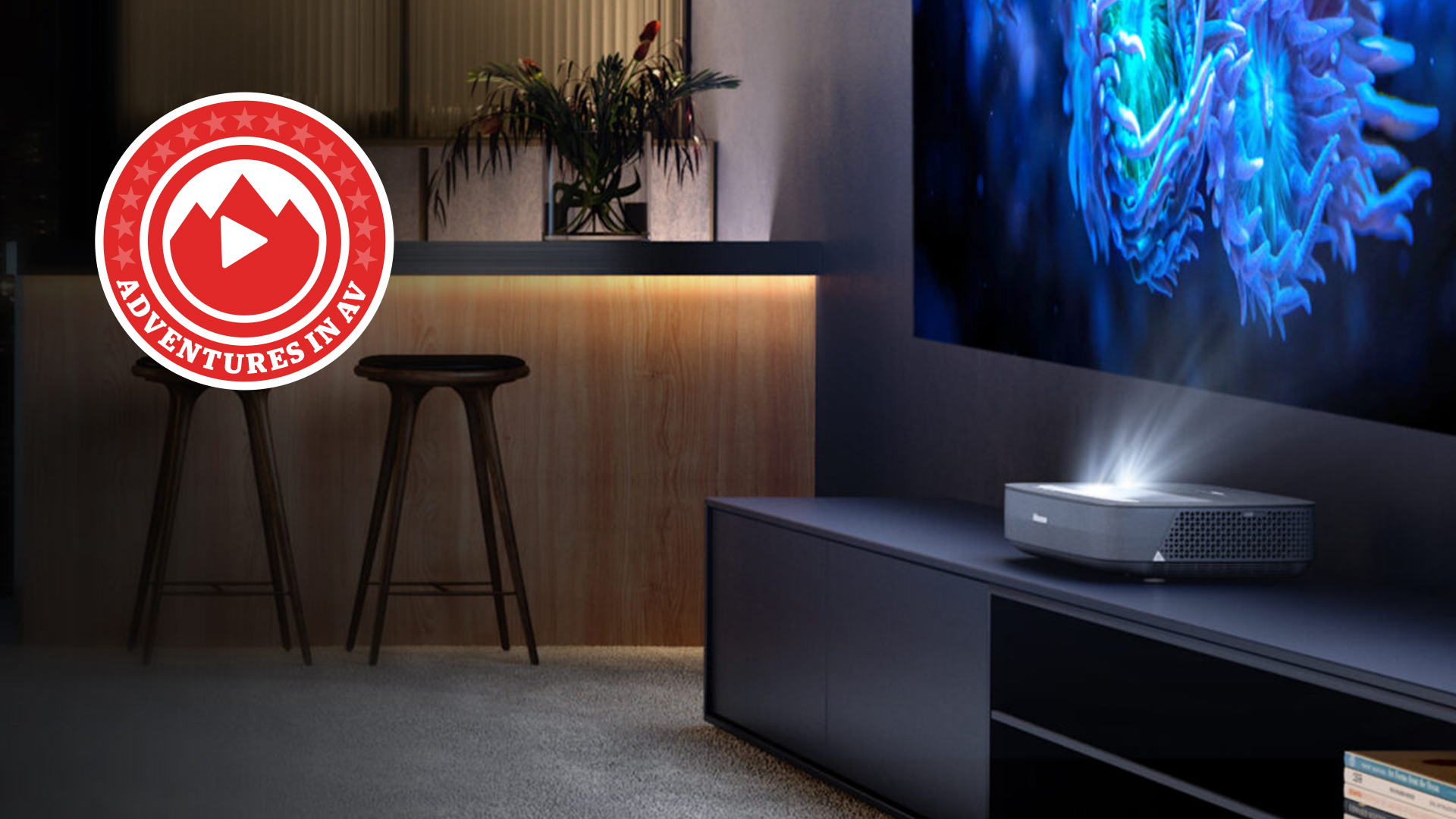Ultra Short Throw projectors are getting seriously good, but there are still a few major flaws
The cinematic scale is great, but my TV does these things better

Ultra short-throw projectors are an outlier in my usual area of expertise. In my just over a year and a half time at What Hi-Fi? I've become thoroughly accustomed to TVs, soundbars, phones, tablets and even regular projectors, as I'd had plenty of experience with all of those things before; however, UST projectors were more of an oddity. What doesn't help is that they're fairly elusive, only releasing sporadically, unlike TVs which often follow a rigid release schedule.
And yet, they are becoming a product category I am becoming increasingly fond of, and for many reasons too. Companies such as Hisense, Samsung, LG and Epson are embracing these TV alternatives to great effect, with fairly consistent improvements to their feature sets and picture quality. They also occupy a unique space in that they can deliver a huge image of anywhere from 80 inches to 120 inches and beyond, all while being contained in fairly compact (and sometimes quite visually appealing) enclosures.
However, we are seeing increasing amounts of competition in the form of massive 100-inch TVs, perhaps our comments saying that TVs couldn't compete with USTs in the picture-size department made them a tad self-conscious. It feels like in just a few months, these super-sized TVs have broken through the market and are now available at attainable price points.
Just last week I went to Warsaw, Poland with TCL to sample these extraordinarily large sets, namely the surprisingly cheap TCL 98P745. Despite the fact it would absolutely not fit in my modest London living room, it cost only £1999, which caught me rather off guard. That's not miles away from many of the USTs we test, a touch more than the Award-winning Hisense PL1 and well under the likes of Samsung's The Premiere UST.
While this TV wasn't perfect, it did get me thinking about how the dynamic could shift, with TVs now able to replicate the cinematic big-screen experience of a projector. Not only that, there are a fair few instances where they are a lot better equipped than a UST. Just to caveat, the Hisense PL1 is still an excellent product, but the TCL P745 did highlight the first major flaw.
Gaming specifications on these UST projectors just aren't good enough. Neither Samsung nor Hisense's current options that we have reviewed support 120Hz, despite the latter sporting HDMI 2.1. In fact, the Hisense has only two HDMI sockets, both 2.1, neither is 4K/120Hz, which also means no VRR. It does have ALLM, and the novelty here comes from being able to play your games on a huge screen, but you certainly won't be able to push your PS5 or Xbox Series X to its full potential.
The TCL 98-inch TV I used, however, was fully equipped to take full advantage of these consoles. Using an Xbox Series X, I played Ori and the Will of the Wisps in 4K, 120Hz and in Dolby Vision; better yet, it looked rather nice too.
The latest hi-fi, home cinema and tech news, reviews, buying advice and deals, direct to your inbox.
Furthermore, there were more expensive sets that highlighted a major flaw in the projector market in general, not just with USTs. Looking at the TCL C805 98-inch (expect a hands-on review very soon), which isn't by any means flagship-quality, I found that black depths are better than any UST I have seen up to this point. The Mini-LED technology plays a crucial part here, and while it's not OLED level, it's much more convincing than most projectors, which have no choice but to resort to some form of grey when they intend to display black.
Now this isn't necessarily surprising, as of course trying to reproduce black using light pointed directly at a screen or wall is slightly tricky, but that was the sacrifice we made in order to get that big-screen experience we love very dearly. Now that we have 100-inch TVs, however, that justification becomes a bit trickier. I'm also not entirely sure how projectors can circumnavigate this issue, as black depths will never be perfect on a projector.
While this is all food for thought, the outcome for me is that I will be paying even greater attention to 100-inch TVs and ultra-short throw projectors next year, to see how each progresses. UST projectors have gone unrivalled in this sector of the market for quite some time, so to see how projector brands react to this in 2024 will certainly be interesting.
MORE:
Check out our Hisense PL1 review
As well as our hands-on review of the TCL 98P745
And our list of the best projectors
Lewis Empson is a Senior Staff Writer on What Hi-Fi?. He was previously Gaming and Digital editor for Cardiff University's 'Quench Magazine', Lewis graduated in 2021 and has since worked on a selection of lifestyle magazines and regional newspapers. Outside of work, he enjoys gaming, gigs and regular cinema trips.
